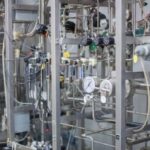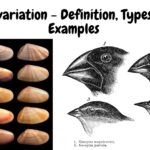O Level Biology 48 Views 1 Answers
Sourav PanLv 9November 3, 2024
Describe the growth of the pollen tube and its entry into the ovule followed by fertilisation (production of endosperm and details of development are not required)
Describe the growth of the pollen tube and its entry into the ovule followed by fertilisation (production of endosperm and details of development are not required)
Please login to save the post
Please login to submit an answer.
Sourav PanLv 9May 15, 2025
The growth of the pollen tube and its entry into the ovule is a crucial process in plant reproduction, particularly in angiosperms. Here’s a detailed overview of this process, culminating in fertilization.
Pollen Tube Growth
- Pollen Germination:
- The process begins when a pollen grain lands on a receptive stigma. The stigma secretes nutrients that promote hydration and germination of the pollen grain.
- Upon hydration, the pollen grain absorbs water, causing the exine (outer layer) to rupture, and the intine (inner layer) begins to grow outwards, forming a pollen tube.
- Pollen Tube Elongation:
- The pollen tube grows through the style towards the ovary, guided by chemical signals from the pistil tissues. This growth occurs through a process known as polar tip growth, where the tube elongates exclusively at its apex.
- As the tube grows, it transports two sperm cells along with its cytoplasm towards the ovule. The growth rate can vary significantly among species; for example, in lilies, pollen tubes can grow several centimeters within hours.
- Nutrient Support:
- The style provides essential nutrients and signals that facilitate pollen tube growth. Calcium ions play a crucial role in regulating growth dynamics and signaling pathways.
Entry into the Ovule
- Reaching the Ovule:
- Once the pollen tube reaches the ovary, it navigates toward the ovule through specific pathways. The entry point is typically through an opening called the micropyle.
- Different plants may exhibit variations in how the pollen tube enters the ovule:
- Porogamy: Entry through the micropyle (e.g., lilies).
- Chalazogamy: Entry through the chalazal end (e.g., Casuarina).
- Mesogamy: Entry through other parts of the ovule (e.g., funicle).
- Guided Entry:
- The pollen tube is guided to enter one of the synergids located near the egg cell within the embryo sac. The synergids help facilitate this entry through structures called filiform apparatuses that provide directional guidance.
Fertilization
- Double Fertilization:
- Upon successful entry into the embryo sac, one sperm cell fuses with the egg cell to form a zygote, while the other sperm cell fuses with two polar nuclei to form triploid endosperm tissue.
- This phenomenon of double fertilization is characteristic of angiosperms and is essential for seed development.
0
0 likes
- Share on Facebook
- Share on Twitter
- Share on LinkedIn
0 found this helpful out of 0 votes
Helpful: 0%
Helpful: 0%
Was this page helpful?




